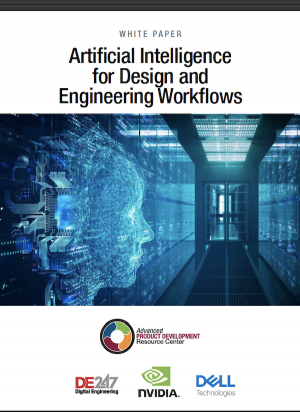
A racer rendered on NVIDIA RTC GPUs in Omniverse. Image courtesy of NVIDIA.
Latest News
August 18, 2023
During his keynote address at SIGGRAPH 2023, NVIDIA CEO Jensen Huang said, “The generative AI era is upon us—the iPhone moment of AI, if you will, where all the technologies of artificial intelligence came together in such a way that it is now possible for us to enjoy AI … Some startups are doing content creation. Some are also using generative AI to steer self-driving cars, or animate or articulate robotic arms.”
NVIDIA is developing generative AI tools for a wide range of industries. At SIGGRAPH, the company held a workshop with select automotive industry leaders to demonstrate generative AI technology in development and collect feedback.
Peter Pang, Senior Product Manager, Virtual and Augmented Reality at NVIDIA, explained, “We showcased that generative AI can accelerate the creative process and serve as an intelligent assistant to create multiple iterations on a particular design.”
The workflow demonstrated for the automakers at SIGGRAPH utilized Stable Diffusion, accepting both text prompts and images as input to generate professional-looking 2D automotive sketches, complete with backgrounds. Such a workflow could allow designers to create a rendered image based on a sketch plus text prompts, or create variations of an existing idea, and isolate a certain region of the output as a target for further refinement to create more derivatives.
The AI-generated design sketch “may not be 100% of what you want, but it's going to create new and unexpected directions critical to design exploration,” said Pang. “The value of generative AI is that a single designer can create dozens of rendered images and variations on sketch concepts that can expedite and enhance the creative process.”
NVIDIA’s generative AI technology uses Stable Diffusion, an open-source text-to-image generative AI model trained on the English language. The current technology could lead to AI-based 3D content creation using USD models or other commonly used mesh models, Pang envisioned.
In another video demo published by NVIDIA, Mario Viviani, Developer Relations Manager for Omniverse, showed how to procedurally populate virtual worlds with Omniverse using pre-existing 3D models of objects and furniture. In the demo, he showcases the AI Room Generator Extension (available as a reference from GitHub), powered by NVIDIA DeepSearch and GPT- 4. By developing such tools with Omniverse, developers can equip their end users to, for example, place typical warehouse items in a predefined space, Viviani said, “The AI Room Generator is one of our experiments using large language models for accelerating 3D workflows. All Omniverse developers can clone it from GitHub and test it. We’ve run another small experiment called Camera Studio, which is an extension that allows users to generate virtual cameras in Omniverse by creating the camera settings via ChatGPT. It can be found in the Omniverse Extension Manager.”
GPU Acceleration
Generative AI models and applications are compute-intensive; therefore, they benefit from GPU acceleration. “We have been running the technology preview on our NVIDIA RTX 6000 Ada Generation GPUs,” said Pang. “We could run this application locally or in the cloud. In our tests, we were able to create 50 different design variations in eight seconds.”
In its blog post titled “Generative AI Revs Up New Age in Auto Industry, From Design and Engineering to Production and Sales,” NVIDIA writes, Foundational models—like ChatGPT for text generation and Stable Diffusion for image generation—can support AI systems capable of multiple tasks. This unlocks many possibilities. Much like when early iPhone app developers began using GPS, accelerometers, and other sensors to create mobile applications, AI developers now can tap foundation models to build new experiences and capabilities.”
NVIDIA and its OEM partners like Dell offer GPU-equipped workstations targeting AI workloads. At SIGGRAPH, Huang introduced the next-generation GH200 Grace Hopper GPU. He called it the superchip “for the Era of Accelerated Computing and Generative AI.”
The company also announced the release of a new line of AI workstations featuring NVIDIA RTX 6000 Ada GPUs, NVIDIA Omniverse, and NVIDIA AI Enterprise Software. Also available are workstations configured with NVIDIA RTX 5000, 4500, and 4000 Ada Generation GPUs, all available soon from Dell Technologies and other OEM partners.
More Dell Coverage

More NVIDIA Coverage
Subscribe to our FREE magazine, FREE email newsletters or both!
Latest News








